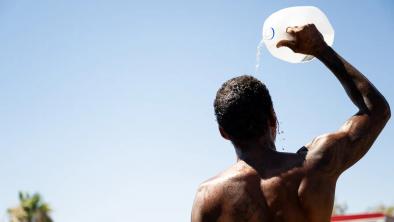Science Source
The impact of excess heat events in Maricopa County, Arizona: 2000–2005
- States that exposure to excess heat is preventable yet it is the primary weather-related cause of mortality in the United States
- States that in the Southwest United States, high temperatures are common and indoor environments often have cooling devices
- States that in summer 2005, Maricopa County, Arizona experienced a 182% increase in reported heat-related deaths in comparison to 2000–2004
- Examines at-risk populations and excess mortality
- Characterizes heat-related deaths using descriptive and multivariate time-series analyses of county vital record data from June–September 2000–2005
- Describes the data: From June–September, 2000–2005, 136 heat-related deaths (0.68 per 100,000) were reported; 49 (36%) occurred in 2005. In July 2005, a 14-day heat wave resulted in 28 (57%) reported deaths—a 102% increase in comparison to the same time period in 2000–2004. The mean age of all 136 deaths was 56 years (range: 7–92 years). Of those with discernable reported injury locations, 62 (66%) were identified outdoors. Forty-eight (77%) decedents identified outdoors were <65 years; conversely, 26 (82%) decedents who were found indoors were ≥65 years
- Observes a 6% (95% CI: 1.00–1.13) increase in mortality risk for each degree (F) increase in heat index
- Finds that excess heat impacted a younger population in Maricopa County and many deaths occurred outdoors
- Concludes that consecutive days of heat exposure—even among a heat-acclimated population—can increase mortality risk
Related Content
Science Source
| MDPI
The Effects of Historical Housing Policies on Resident Exposure to Intra-Urban Heat: A Study of 108 US Urban Areas
Jeremy S. Hoffman, Vivek Shandas, and Nicholas Pendleton
Headline

Nov 17, 2023 | Climate Nexus Hot News
Our Warming World Is Dangerous For Human Health
Headline

Oct 16, 2023 | AP
Rising Heat-Related Deaths in AZ
Headline

Oct 11, 2023 | Climate Nexus Hot News
Study: Climate Change Could Push Heat and Humidity Past Survivable Limits for Humans


